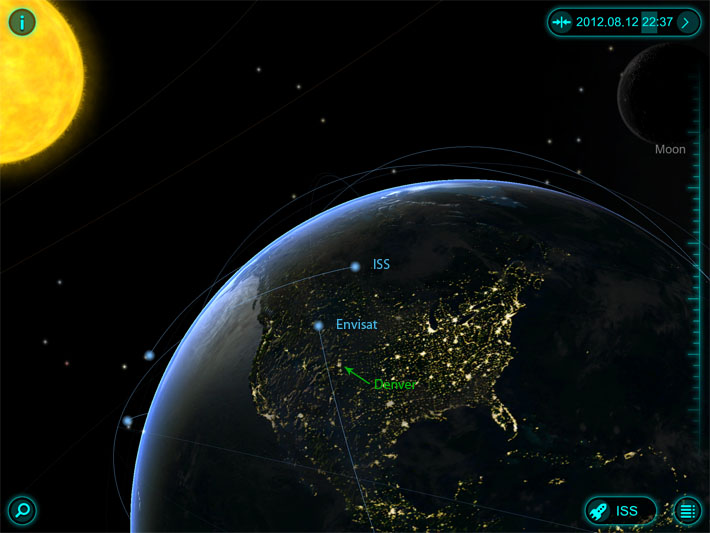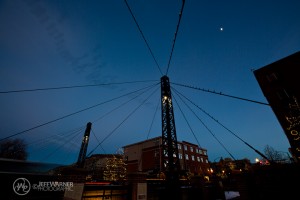Finally getting a clear night up here in Summit County, I spent an hour on top of Loveland Pass tonight photographing the deep sky, trying to get the tail end (no pun intended) of the Perseid meteor shower, which peaked last night. One of the better meteors I captured happened to be in the field of view (top left center) as the International Space Station passed into the earth’s shadow low on the horizon, somewhere over southern Canada (the Andromeda Galaxy is also visible at center right, a hazy disk). Below the full image are a couple of 2:1 crops showing the detail of each. [*The time-lapse video added to end of this post led to the conclusion that it is not a meteor, but the Envisat satellite passing overhead; see below.]
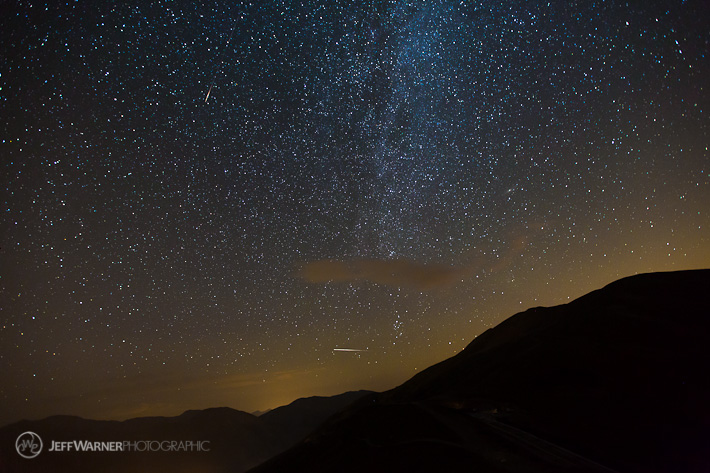
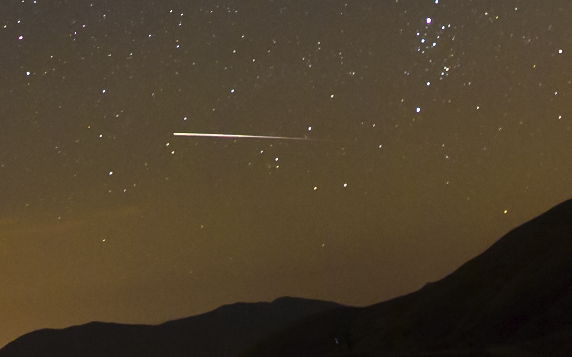
Screenshot from Satellite Tracker, showing the ISS’s passage on the northern horizon:

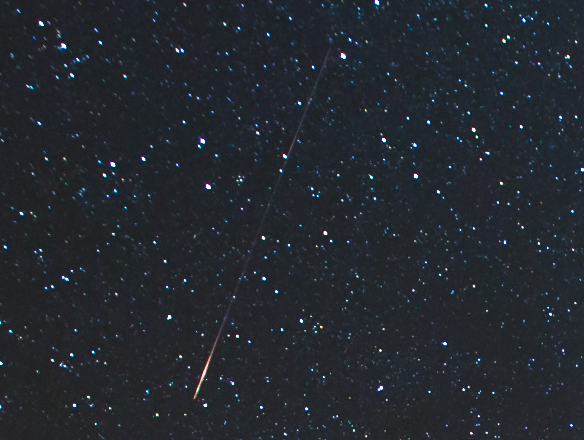
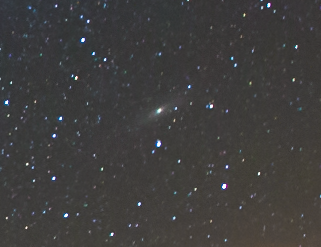
And an overhead shot of the Milky Way Galaxy, with the best meteor of the night:
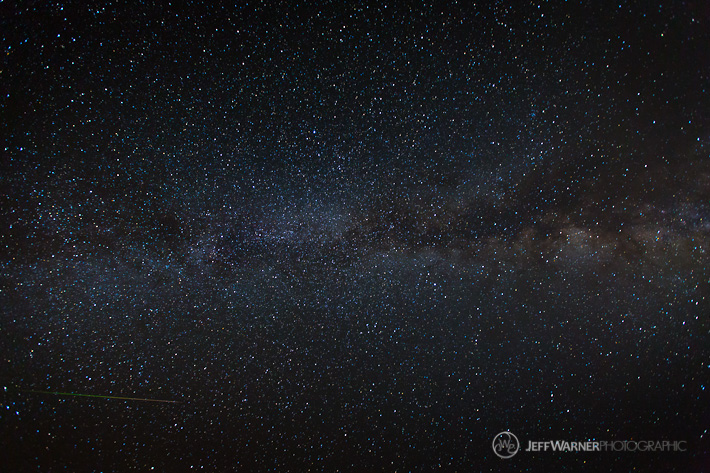
And a 1:3 crop of the meteor traversing along the axis of the Milky Way galaxy; note the characteristic green tail of the meteor, indicative of the ionization of the particular element making up the meteor:
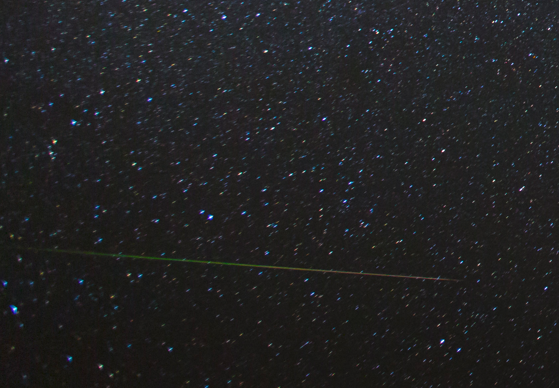
After assembling 12.5 minutes of time-lapse video (at 6 FPS), it became obvious that what I first thought was a meteor was actually an additional satellite passing overhead (Envisat, the largest earth observation satellite as of 2006). The main image at the top shows Envisat ‘flaring’, a result of its solar panels reflecting the sun more directly toward the viewing location. If you look closely, you can see Envisat disappear toward the horizon (from top to bottom, center-left) over the course of a few frames; it was visible for approximately 3 minutes. The ISS is obvious enough passing low over the horizon from left to right, disappearing into the earth’s shadow midway through the video:
Lastly, a quick screenshot from the SolarWalk app, showing the passage of ISS and Envisat overhead Denver:
